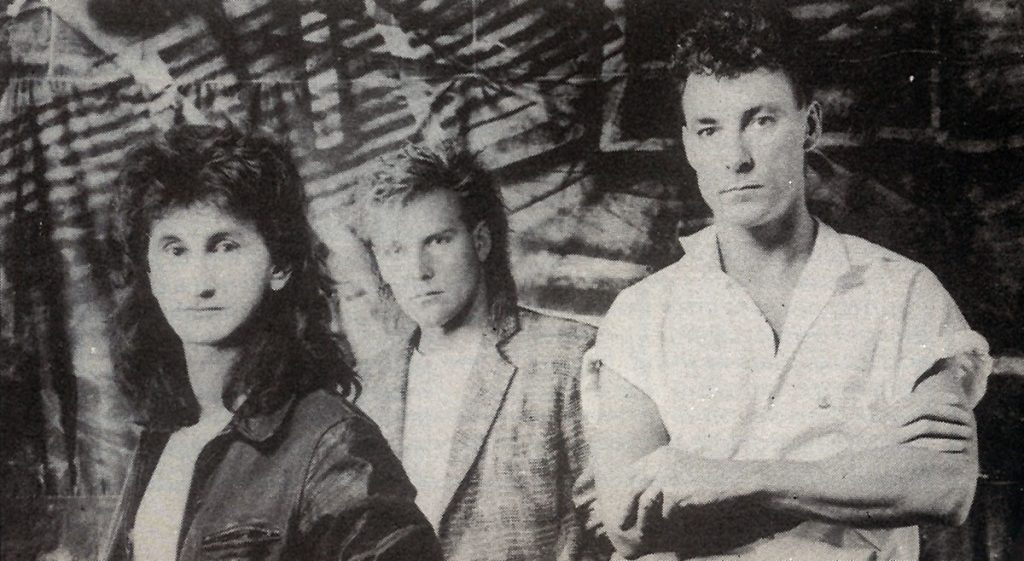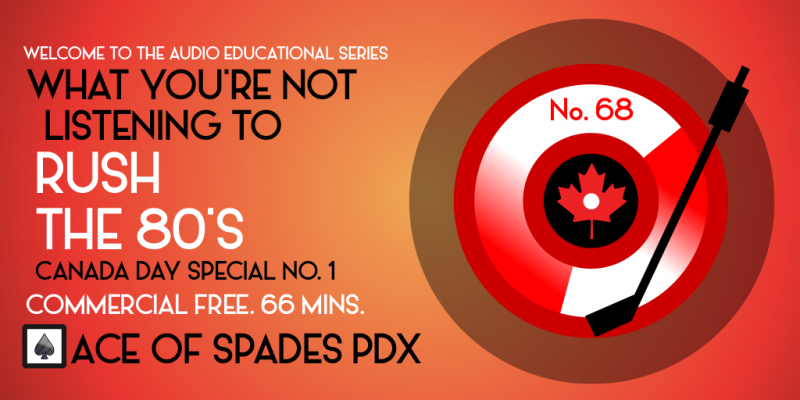Podcast: Play in new window | Download | Embed
The greatest power trio in history decides to expand their sound and take chances in their second decade, resulting in world-wide commercial success. #canadaday #canadaday2020 #rush #progrock
The 1980’s were kind to our heroes. At the beginning of their second physical decade as recording artists, Rush, the greatest power trio in history, decided to do the unthinkable: alter their sound dramatically, but over a period of time, in stages. The didn’t completely leave their trademark blend of progressive rock and heavy metal behind, but they were one of the few acts of the sound they basically created and and one of the few of that era to continue to find new fans and survive the 1970’s.

Their new releases of the decade saw them do the unthinkable for a progressive rock act, which was to chart hit singles around the world. In fact, their very first Top 20 single anywhere was not in their native Canada, but in the U.K., which was “The Spirit Of Radio” in 1980, an incredible feat for a group founded in 1968 and who had released their first single in 1973. Shorter, tighter songs became the norm, and after their 1981 LP Moving Pictures, a classic album in every sense of the word, they also abandoned the lengthy extended suites that brought them initial fame. Synthesizers were now common, as was digital recording technology; vocalist Geddy Lee even started singing in a lower, more natural register. New musical influences to started to creep in, such as Pop, Classic Rock, Funk and even Reggae.
“If there was any one achievement, it would be that we’ve have done it on our own terms.”
Alex Lifeson
The band were now solidly ensconced as arena rock headliners, but unlike so many other acts of the period, they were still Rush: weird, quirky, following no one’s muse but their own, not bending to current radio trends and even willing to stick to their guns when critical and commercial feedback wasn’t kind to them. Believe me, this was an era where many mainstream heavy rock bands were having major hits about strippers and blowjobs, subjects never discussed on a Rush recording. By the end of the decade, the now veteran group had achieved the impossible, something no other Canadian act has done: become a consistent chart presence with a die hard fan base that would follow them anywhere sonically they wished to travel. For example, in the U.S., they trail only two recording artists in terms of consecutive Gold certified records, The Beatles and The Rolling Stones.

Most importantly, the band never took their success for granted, were genuinely humble and made time to actually meet and connect with fans, either in person or through books and the the internet. You never got the impression that these people hated being around each after working so closely together for so many years. They all knew how good they were, and never settled for not attempting to be even better than that. Ego never seemed to be a word used to describe Rush. At the end of the day, this is what possibly makes the band so unique and iconic: if you’re in it for the music and the brotherhood, there is no telling what three friends can achieve.
First Part
- The Analog Kid, 1982, Signals
- Force Ten, 1987, Hold Your Fire
- Vital Signs, 1981, Moving Pictures
- Show Don’t Tell, 1989, Presto
- The Spirit Of Radio (live), 1981, Exit…Stage Left
- Distant Early Warning, 1984, Grace Under Pressure
Second Part
- YYZ, 1981, Moving Pictures
- The Big Money, 1985, Power Windows
- Subdivisions (live), 1987, A Show of Hands
- Tom Sawyer, 1981, Moving Pictures
Finale
- Natural Science, 1980, Permanent Waves
Love to you all.
Ben “Daddy Ben Bear” Brown Jr.
Host, Producer, Webmaster, Audio Engineer, Researcher and Writer
“Copyright Disclaimer Under Section 107 of the Copyright Act 1976, allowance is made for ‘fair use’ for purposes such as criticism, comment, news reporting, teaching, scholarship, and research. Fair use is a use permitted by copyright statute that might otherwise be infringing. Non-profit, educational or personal use tips the balance in favor of fair use.”
